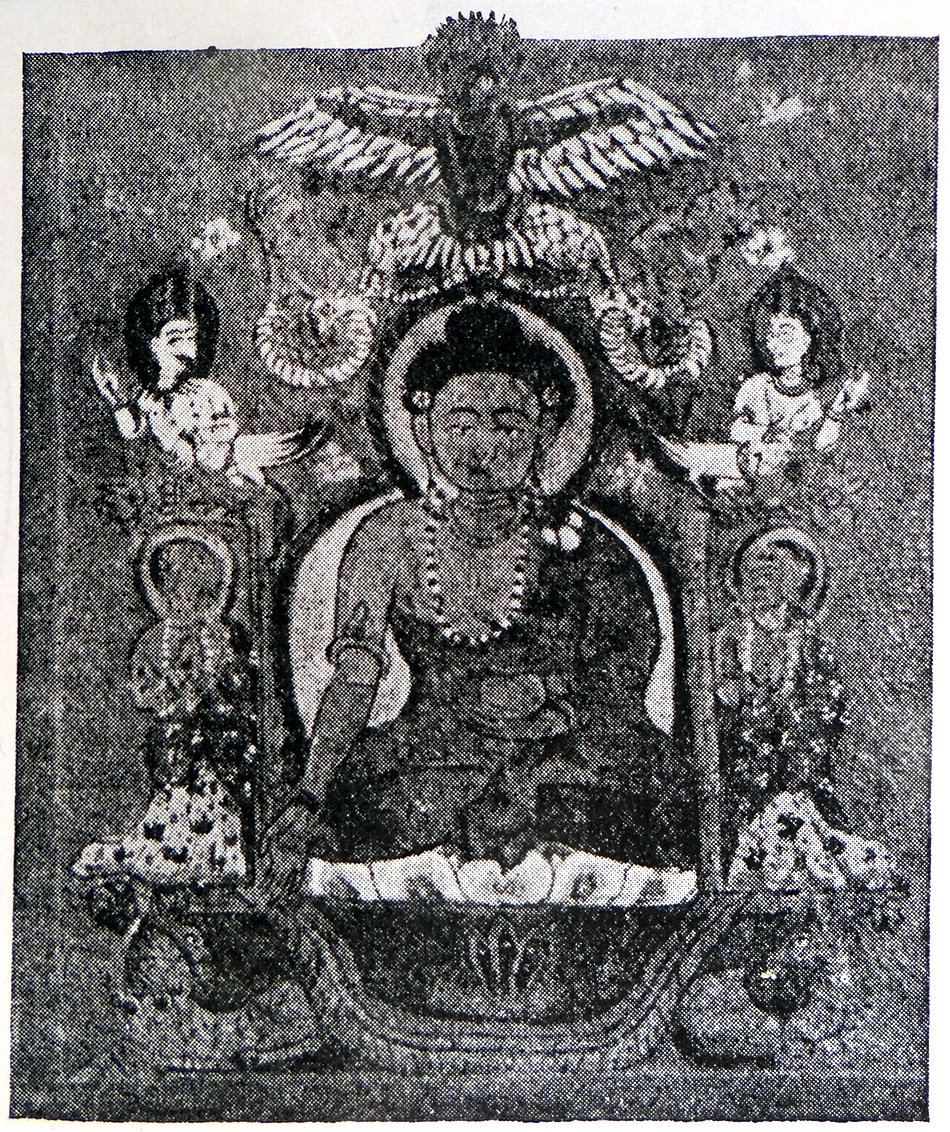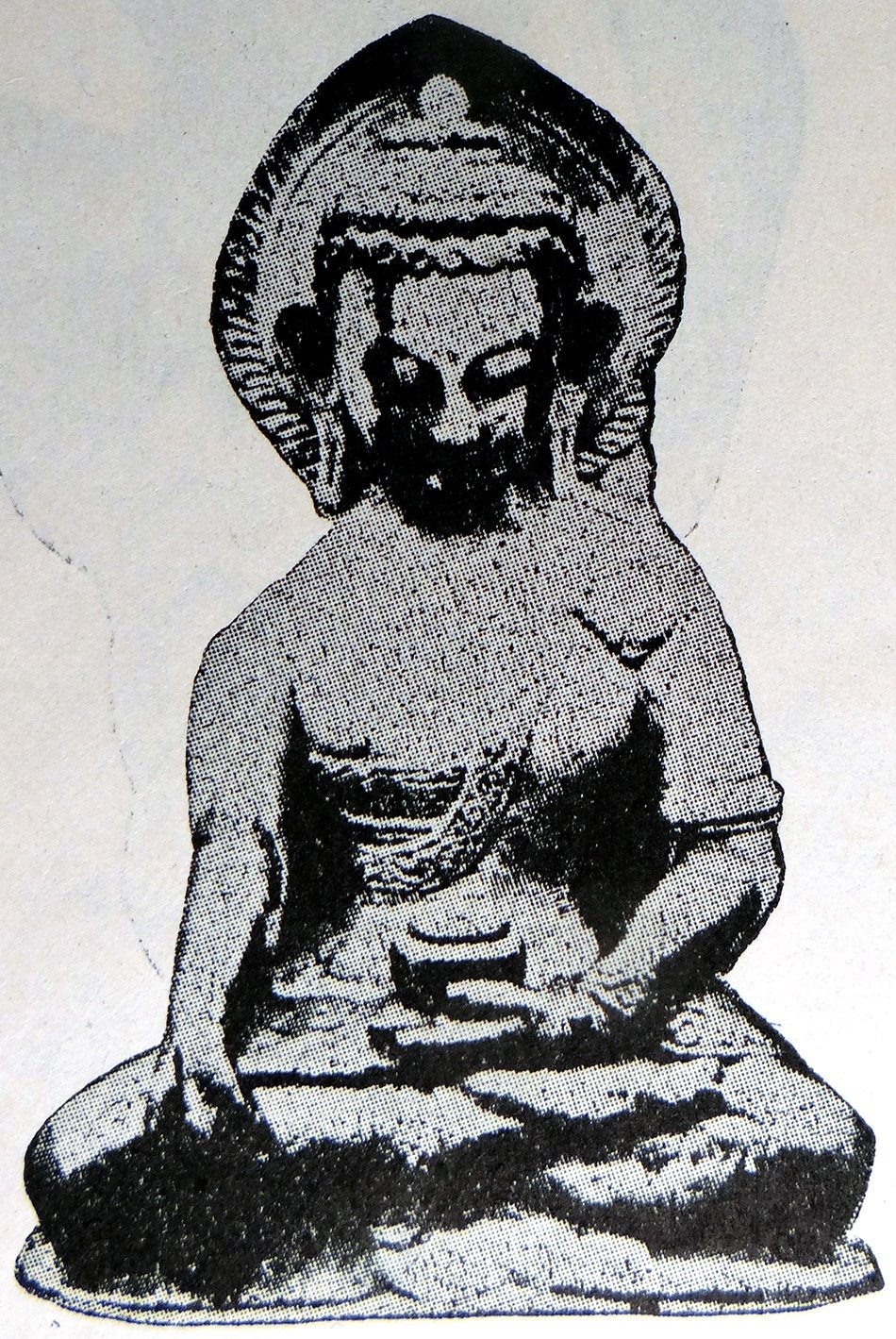The Indian Buddhist Iconography
by Benoytosh Bhattachacharyya | 1958 | 51,392 words | ISBN-10: 8173053138 | ISBN-13: 9788173053139
This page contains an iconography image of Ratnasambhava and represents figure 37-38 of the book Indian Buddhist Iconography, based on extracts of the Sadhanamala English translation. These plates and illustrations represent either photographs of sculptures or line-drawing reproductions of paintings or other representations of Buddhist artwork.
Figure 37-38 - Ratnasambhava
 Figure 37: Ratnasambhava |
 Figure 38: Ratnasambhava (Nepal) |
The Nepalese Buddhists regard Ratnasambhava as the Third Dhyāni Buddha in order, and the earliest mention of his name may be found in the Guhyasamāja which is believed to have been composed circa 300 A.D. Ratnasambhava is the progenitor of the Ratnakula, and is described widely in the Buddhist Tantric works. Out of all descriptions the one given in the Pañcākāra section of the Advayavajrasaṃgraha is perhaps the best.
Ratnasambhava may have more arms than two and in such forms he is described in the Niṣpannayogāvalī. Such forms are also represented in art. Some of his two-armed forms are only illustrated here (Figs 37, 38). He is widely known and represented in Tibet and China.
